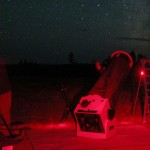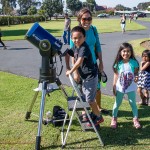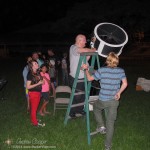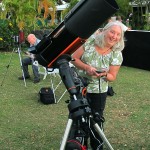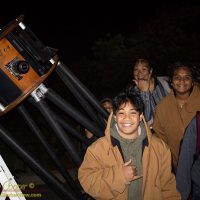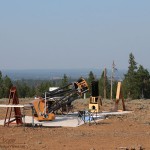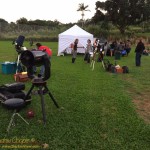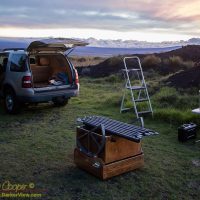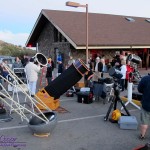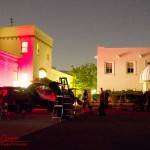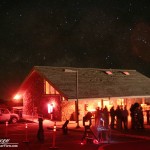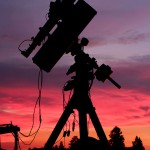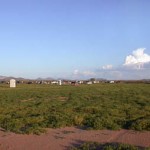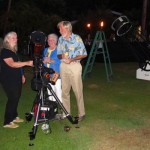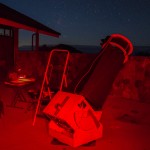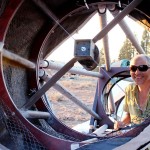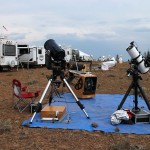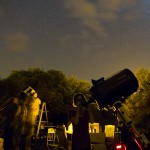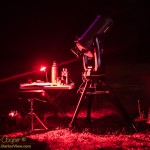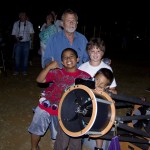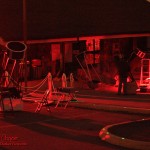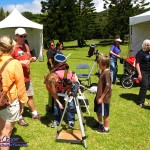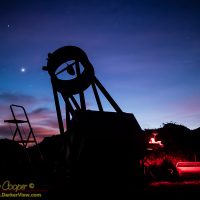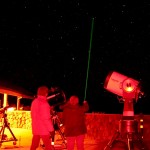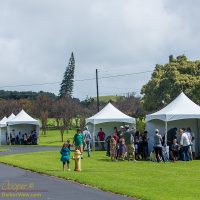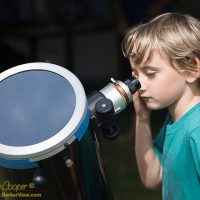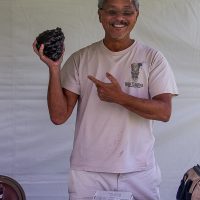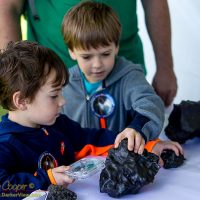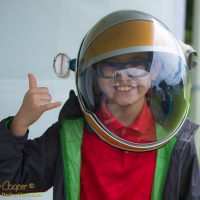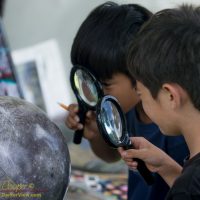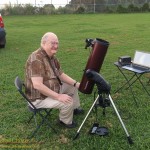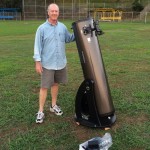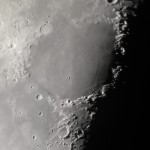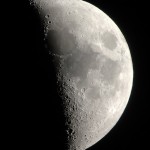Category: Outreach
Giving knowledge back to the public
Solar System Walk 2016
Walking from the Sun to Neptune is easy… At least when they are set up in a scale model along main street Waimea.
A fun day… The Sun, telescopes, the planets, a few asteroids represented by meteorites, and plenty of activities for the kids. It was a great day to be in Waimea as CFHT and Keck put on the Solar System Walk 2016…
Restoring an Obsession
Obsession Telescopes are something of a standard in the astronomy community. David Kriege was one of the first to start building truss tube dobsonian telescopes commercially, bringing portable large aperture telescopes to the astronomy community. These telescopes were a bit of a revolution in the pursuit, with sizes unreachable only a decade before, when a 10″ or 12″ telescope was considered big. When I built my 18″ it is David Kriege’s book I used for much of the design, following in the footsteps of so many amateur astronomers.
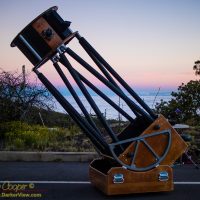
A 20″ f/4 Obsession donated to the observatory has presented a challenge and an opportunity. The telescope was the prized possession of Bob Michael having been ordered new directly from Obsession. The telescope is serial number 004 with a manufacturing date of June 1st, 1990. As David started Obsession Telescope in 1989, this is a very early example of his work. For many years Bob and his wife used this telescope to observe, completing the Herschel 400 and other observing projects. Unfortunately he was forced to give up astronomy due to age and glaucoma, donating his equipment to the observatory.
Andrea Ghez at WHAC
Not a call I want to get just a few hours before our astronomy club meeting… My presenter for the evening? Tooth extraction?
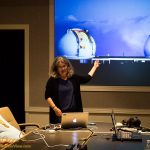
The West Hawaii Astronomy Club is not a large club, more than a dozen folks is a big meeting. Still, these are dedicated amateur astronomers that can be relied upon to help out with school star parties and observatory events. They have driven all the way to Waimea because I promised them a lecture from an astronomer. A few folks come from Kona 45 minutes to an hour away. I really want to give them something worth the effort of getting here.
They will just have to settle for a talk with Andrea Ghez.
Yes, that Andrea, the closest thing we have to a superstar in astronomy. Discoverer of the black hole at the center of our galaxy, winner of the Crafoord Prize and the Bakerian Medal… That Andrea.
I ran into Andrea at dinner next door to the observatory, we know each other from other outreach events and swapping photos. She is a regular Keck observer with research that concentrates on the massive black hole at the core of our Milky Way galaxy. I asked her if she could come talk with the club, or rather I begged a bit. Being the gracious lady she is, she said yes. Thanks Andrea!!
It was so much better than the warmed over presentation I had thought I would be giving this evening. The small group allowed something closer to a conversation than a lecture. There were some good questions too! We moved past the basics pretty quickly with a group that knew more than a little about the subject. I found the evening very informative, I think everyone did.
Safe Solar Viewing
You have heard it before, but it really is true! Looking at the Sun for longer than a few brief moments with an unprotected eye can lead to permanent damage. Looking at the Sun with any sort of optical deceive that has not been properly filtered can lead to instantaneous eye damage.
Discussed below are the only safe methods I am aware of to view the Sun. There are some dodgy methods out there. Take chance with your irreplaceable eyesight? I think not. Be careful and do it right if you want a look.
For the unaided eye there are a couple options to view the Sun safely…
Continue reading “Safe Solar Viewing”Cherry Blossom Festival Sidewalk Astronomy
It was a perfect day to do an astronomy outreach event. Of course as it was a daytime event, only one star is available for viewing in the telescopes… The Sun. Set up a few solar telescopes for an astro outreach event.

The festival guarantees a huge crowd of people for an outreach event, no advertising needed. The main part of the festival takes place along church row where the cherry trees are, next door to Keck headquarters. Much of the available parking is at the shopping centers on the other side of headquarters. There is a steady stream of hundreds of people right through our lawn. All we needed to do was to set up and be ready for a crowd.
A few friendly looking telescopes, a couple signs with the prominent word “free”… We had a crowd! As one would expect they came in surges, for four hours it varied between a few people at each telescope to a good sized line at every telescope, with up to fifty people gathered around at at time. We had three telescopes operating, two eight inch telescopes with white light filters and the Coronado PST providing a hydrogen alpha view.
Continue reading “Cherry Blossom Festival Sidewalk Astronomy”
Dear Keck Staff
We have a lot of fun when the kids come to visit. We regularly offer tours of Keck to local school groups. When they come we lay in a schedule of activities… Solar telescopes, an IR camera demonstration, tours of our remote operations, the activities can vary depending on the grade level.
After the last tour we got a packet of thank you letters from one of the classes. These are just fun to read, it is great to see what the kids remember from their visit. A drawing of telescopes set up in the lawn caught my eye, I was responsible for running the solar telescope activity!
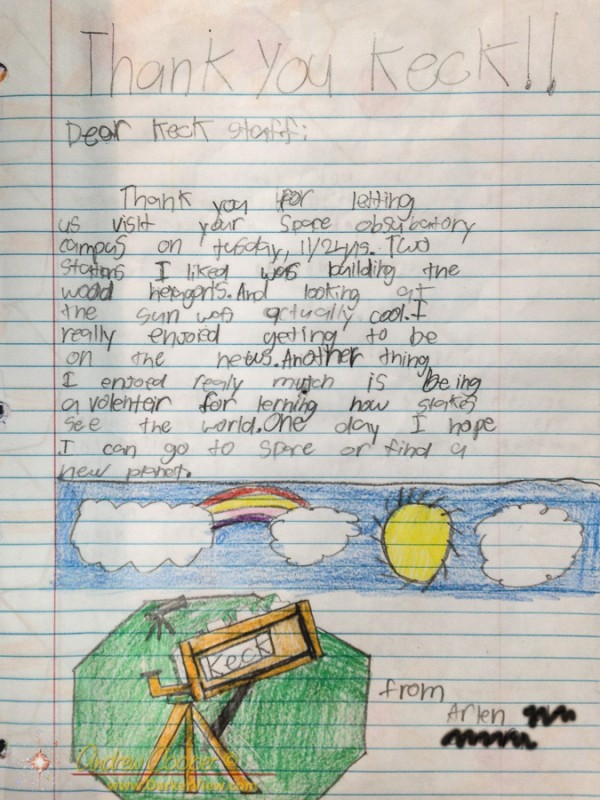
Afocal Luna
With a few public outreach events this last week I had a few opportunities to hold my phone up to the eyepiece and shoot a few shots of a waxing Moon. The iPhone 5S does have a notably better camera than my old 3S. The afocal method does provide some nice snapshots of the Moon.
As usual I demonstrated the technique to our viewers, showing them how to use their phone to shoot the Moon. The result? Big smiles and happy folks, thrilled to have some great Moon photos of their own.

Laupāhoehoe Charter School Star Party
It was a great school star party.
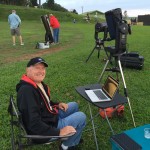
Nothing is more frustrating than a crowd of kids wanting to see through the telescope and all you can show them is the bottom of a cloud. I was worrying again as I left Waimea under a solid overcast. Maybe it will be better on the other side of the island? My fear is justified by past experience, the windward side is often cloudy or even rainy in the evening. Arriving at Honokaʻa it was still overcast, maybe down the coast? Over Laupāhoehoe it was clear! How can this be? We got really lucky.
The next worry was the crowd. While setting up there were a dozen telescopes but only a handful of folks waiting for us. But as it got dark the people kept arriving, a steady stream of students and families. A large area of blankets appeared, covering the playing field. William and the other organizers had done a great job of putting out the message to the community, we had a great crowd.
With a quarter Moon we had a good target even before it got dark. Better yet, there were no lights on the field and only a small town below us. After the light faded it was pretty dark on the field, dark enough to show nebulae and star clusters in all their glory.
I spent much of the evening on the Orion Nebula. It looked great in the ‘scope and I could tell the tale of star formation occurring in the clouds of gas visible in the eyepiece. I took a few iPhone photos of the Moon, demonstrating how it was done. The quarter phase was revealing great topography along the terminator.
In the end my worries were for naught. Everything went very well. A lot of happy kids and parents, presented with a good view of our endlessly fascinating universe.
Kamaʻāina Observatory Experience
One of the things the recent controversy has starkly revealed is the lack of understanding of what we do on the mountain. Myths and misunderstandings pepper the comment sections of local newspapers and echo on Facebook.
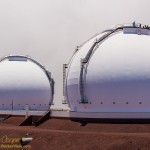
Rumor has it that Hawaii Forest and Trail will be providing the transport, a comfortable service with knowledgable guides.
Surprisingly this was announced by President Obama at the White House Star Party this week. A rather high profile announcement for a local effort.
I will probably volunteer to help out and be a tour guide when it comes Keck’s turn to host the tour.
Information can be found on the website http://www.kamaainaobservatoryexperience.org

